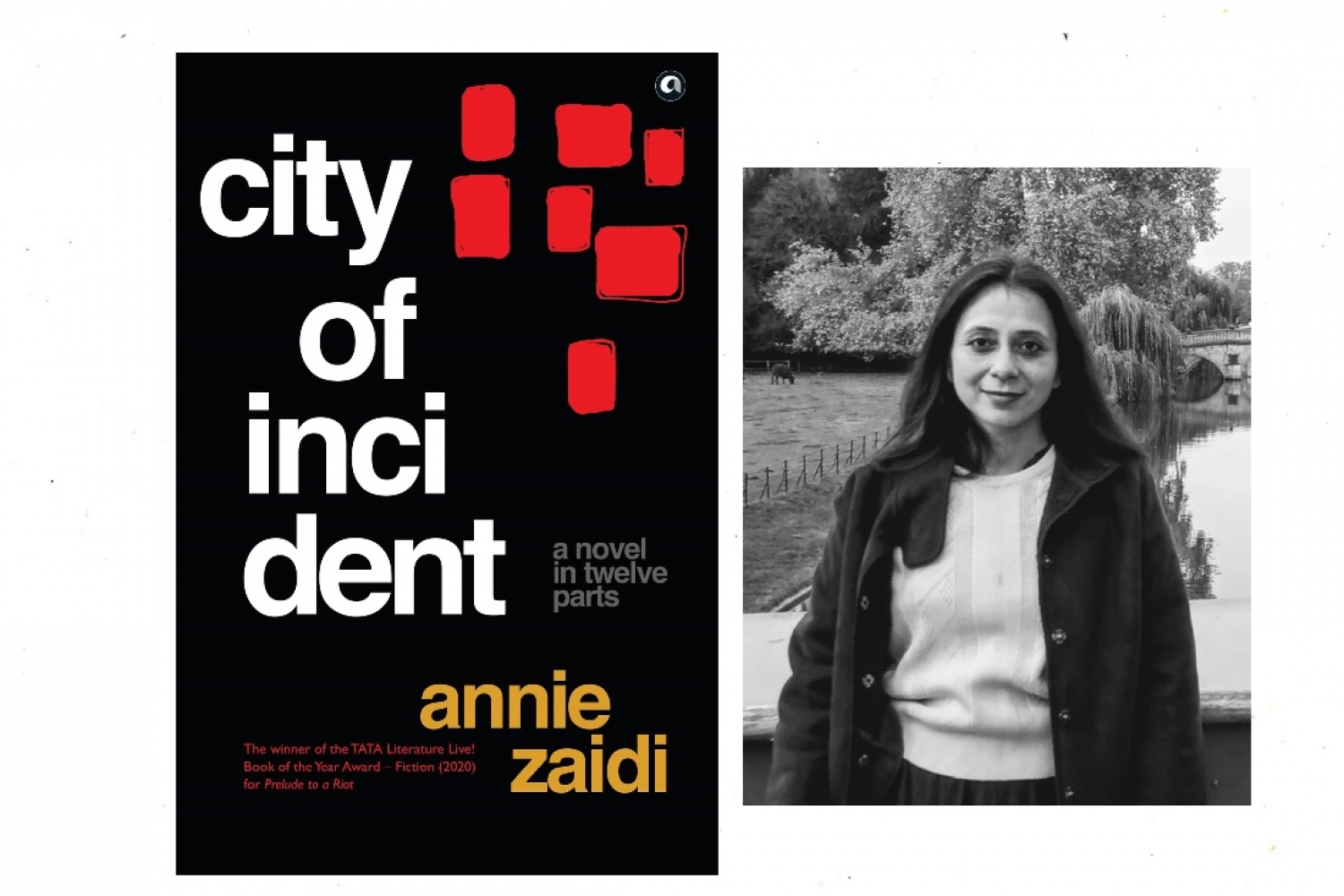

Annie Zaidi, in her new novel City of Incident, introduces us to twelve characters, six women and six men, each given a single chapter. They are bound together by the city they inhabit, a canvas that becomes darker and darker as we get acquainted further to the lives of these characters. An unflinching portrait of the lived, and perhaps ulived, realities of a metropolis, City of Incident is Annie Zaidi’s endeavour to make us look around at the people who occupy the same geographical space of the city as us and observe more closely the power dynamics that governs us all, yet produces such glaringly different realities. She gives us more insight into the creation of her book below:
THE CONCEPTION
This book has taken years to write, even though it is rather short. I don’t think I can point to any single origin story. The story emerged from particular images or incidents that I either witnessed or read about. I carried some of them around for years. It was as if my mind was refusing to let go of those images, as if it sought some kind of story, even an irresolute one, to accompany those memories and slowly, the characters emerged, each one showing the way to the other.
My motivation while writing the book was to portray the city and its silences, the stories that can some- times be seen and imagined but are never loud enough to be associated with the spirit of the city.
ONE CHARACTER, ONE CHAPTER
It wasn’t a conscious decision, but in the beginning, I was using working titles such as “Man 1” “Woman 1” and so on. So, perhaps subconsciously, the choice had already been made. Each section or chapter was setting out to tell the story of that particular man or woman, and it also gave me the basic soil in which to plant the next chapter. I did know from the outset that it wasn’t going to be a big novel about one particular historical event, or one family. In large cities, much of our lives is spent negotiating strangers, and having very fleeting encounters with people. Each encounter is fraught with possibility and also charged with tension, which could be sensual, sexual, emotional, hostile or suspicious. I wanted to capture that moment of fleeting interconnection.
THE SILENCES
As I mentioned above, one of my chief motivations was to portray the silences in the city. People may find it hard to believe, but my own experience of large cities is imbued with silence. Things are felt but never articulated. Things are seen but never discussed long enough for them to become meaningful. Silence is not merely the absence of noise, nor just a lull in a conversation. However, even if one was to take this very basic interpretation of silence, I am sure there are people who pause on streets that suddenly appear too silent. There are moments when one longs for the sound for traffic, or other people’s laughter. There arepeople who live alone in tiny apartments but even a tiny five hundred square foot home can seem too empty, too silent, or filled only with too many demands being made on one person’s time and attention. The absence of deep love or freedom is also often experienced as a silence. I am interested in such quietness and writing is one way of breaking the lull.
THE INFLUENCES
It is difficult to separate one’s influences or know what particular strain of literature leads to the creation of a new work, but I will mention a few cultural references. The titleitself comes from a Hindi film song, though it was not at all quiet in its tone. There are a few other film songs about Bombay/Mumbai, and each one presents a different picture of the city. I also recall Paul Auster’s New York trilogy, Nabaneeta Dev Sen’s novella Sheet Sahasik Hemantolok (Defying Winter), Saniya’s Tyanantar (Thereafter), James Joyce’s Dubliners. There are many other famous books about metropolises, but these are quieter stories that moved me.
THE CHALLENGES
Finding organic links between the stories was one challenge. I allowed myself to be led by the stories and their local geographic or social context, rather than write entirely separate stories and then try to force-fit them into a web of connections. Deciding on “voice” was also a challenge, especially towards the end. I’m using third person voice throughout except in one chapter, where I use second person. Voice is key because it not only suggests perspective, it also limits what one knows about another person, and how it can be expressed.
This article is an all exlcusive from our March EZ. To read more such articles follow the link here.
Text Nidhi Verma
Date 23-03-2022